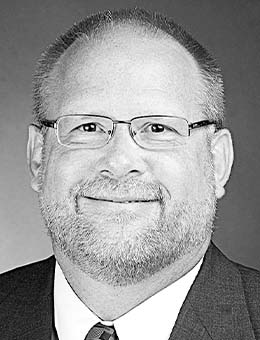
One of the most profound works written by Plato was his “Republic.” In this book, he wrote many stories with embedded morals using a Socratic dialogue approach. My favorite is the “Allegory of the Cave.”
The story takes place as a dialogue between Socrates and Glaucon, Plato’s mentor and brother, respectively. Socrates walks Glaucon through an intellectual exercise by imagining a scenario where several men have been held prisoners in a cave their entire lives. They have been chained in such a way that they can only see the back wall of the cave and nothing else – for the entirety of their lives.
Behind the prisoners is a wall only a few feet high, and behind that wall is a fire stoked by free men. The prisoners know none of this. What they “know” is what they see. They see images displayed on the cave wall in front of them, for the free men use puppets between the fire and the back wall of the cave. The prisoners see the shadows cast against the back wall, and these images and sounds become their reality – their truth.
One day, one of the prisoners manages to escape. He realizes the images he has understood to be reality his entire life are false and created by others. He leaves the cave only to find a world of life and beauty all in color, splendor and dimensionality. He is at first overwhelmed by what he sees, by what he learns. It is so much for him to understand. Slowly, he adjusts and comprehends this new reality, this new truth.
The freed prisoner runs back to the cave to enlighten his comrades. They scoff, in fact, they are angered at his outrageous claims. They see reality in front of them, and show him their proof on the wall. They shout at him and demand he leave.
Plato’s allegory is a story with a moral, one that is enjoyable to read, albeit in a somewhat unfamiliar prose. While I hope each of us would take the time to read this short allegory, we may be tempted to watch any number of cartoon versions on YouTube.
I have my college students read and watch the Allegory. I would say about 5 percent have previously been exposed to it. These are education majors. Plato focused his attention on teachers and leaders and their roles on challenging those in their charge to grapple with truth and reality.
Plato expressed that truth could not be truly understood by our senses alone, for we can be fooled by those who manipulate it. Truth must come from higher level critical thinking and inner dialogue – what educators have come to know as metacognition.
People learn best not by being told, but by experiencing truth themselves. However, experience itself, as if learning through osmosis, is not sufficient. True understanding and comprehension comes from intellectual challenge through debate and dialogue. It takes a personal connection and relationship to the experience, not mere observation.
The teacher, the leader, take the people to the context. These mentors help guide our exploration and experience through reflection and often use such techniques as the Socratic-method. As my dad told me from his days in seminary, “Our cardinal rule was: ‘Don’t study alone.’”
Well, this is my interpretation of the “Allegory of the Cave.” Others will dispute my notions. As a matter of fact, there are numerous interpretations of the moral to this story. But I think that is the point – we must each grapple with what we see and what we understand to be true. We need to critically examine what is being told to us, by whom, and their motives. I’m fortunate, for I get to have these dialogues with students – we don’t study alone.
Personally, I have found our best leaders, in a very real sense, are teachers. They challenge us to leave the comfort of our experiential caves and determine truth for ourselves. They tell stories; they help us tell our own stories, and in so doing, they bring our community together. But what do I know?
Dr. Perry Rettig is a community contributor for The Northeast Georgian. He is a former vice president at Piedmont University and is now a distinguished university professor at Piedmont.
